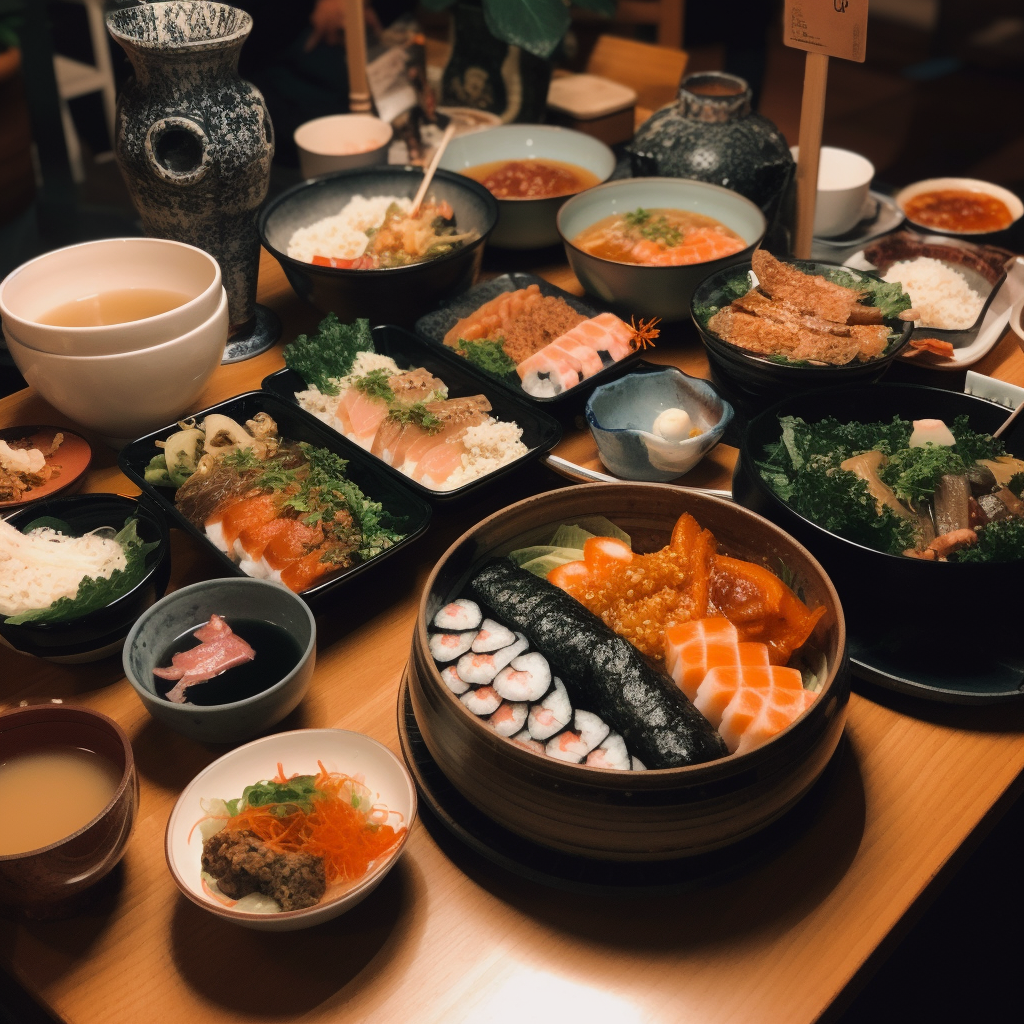A Taste of Tradition: Understanding Washoku
Let’s dive into the world of Washoku – traditional Japanese cuisine. If you’ve ever had the pleasure of tasting a meticulously crafted sushi roll or a comforting bowl of miso soup, then you’ve experienced a small part of the vastness that is Washoku. But it’s more than just food. It represents the Japanese philosophy of respect for nature that is deeply rooted in its culture.
Washoku is based on the principles of five colors (white, black, yellow, red, green), five tastes (sweet, sour, salty, bitter, umami), and five ways (raw, grilled, steamed, boiled, fried). This philosophy ensures a balanced meal both in nutrition and aesthetics.
A Bite of History: The Origins of Washoku
The origins of Washoku can be traced back to the Yayoi period (300 BC – 300 AD). Since then, Washoku has evolved, influenced by trade, politics, and regional variations. A notable period is the Edo era (1603 – 1868), when street food culture bloomed. It gave birth to sushi as we know it today!
Distinction and Honor: Washoku’s UNESCO Recognition
In 2013, Washoku was added to the UNESCO’s Intangible Cultural Heritage list. This honor not only recognized Washoku’s rich history and cultural significance, but also its role in creating social cohesion in Japan.
The UNESCO recognition stresses the importance of preserving the tradition of Washoku. It has become a symbol of Japan’s commitment to its culinary heritage, inspiring a new generation of chefs dedicated to upholding these culinary traditions.
Savoring the Flavor: The Global Influence of Washoku
Today, Washoku has transcended national boundaries. Japanese restaurants are a common sight in cities worldwide. The art of sushi making, the delicate balance of a ramen broth, the visual delight of a bento box – all have garnered global admiration.
The popularity of Washoku worldwide is a testament to its universal appeal. It is not only a source of national pride but also an ambassador of Japanese culture.
The Future of Tradition: Preserving Washoku
The future of Washoku looks bright, thanks to the dedication of culinary professionals and food lovers alike. As more people embrace the philosophy of Washoku, its traditions continue to be preserved, adapted, and appreciated worldwide.
In conclusion, Washoku, with its rich history, cultural significance, and global influence, truly deserves its esteemed position as a UNESCO Intangible Cultural Heritage.

コメントを残す